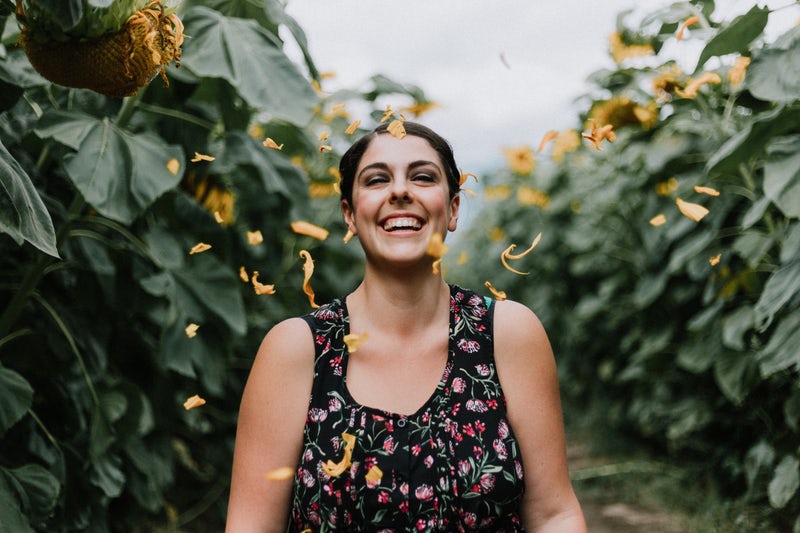Part Four: in the previous sessions, we looked at how to make ads work for us as part of a larger strategy, how to build a “system” that supports the best results for your ads, and how to narrow down your data to find the best audiences. In this session, we’ll look at how to start scaling up without ruining your results (a very common problem when you try to spend more).
 ^^ reaching more people can get complicated (and expensive). Here’s how to make it work for you – and scale up profitably by focusing on what already works
^^ reaching more people can get complicated (and expensive). Here’s how to make it work for you – and scale up profitably by focusing on what already works
“Scaling up successfully means so much more than just throwing a larger budget at your ads - there are things going on behind the scenes that will make this a very expensive experience for you.”
If you’ve ever found an advertising campaign that’s working well for you, then tried to scale it up – and suddenly found your costs spiralling out of control – you’re not alone.
The problem is, Facebook ads (and pretty much every other type of CPM / CPC ad service) is like a kid with pocket money. Give them more… they’ll spend it.
Typically, Facebook will deal with a larger budget by increasing your bid per impression or bid per click. Generally, this means you end up paying more for the same actions – and your ROI plummets.
So, we have to be smarter with the way we scale up. We can’t just take a campaign that’s working well and double the budget, then expect double the results. Chances are, it’ll tank. We have to do something a little bit different – which it what we’ll cover in this session.
In the first article in this series, we talked about how advertising can help boost what’s already working and how it fits into your overall strategy. In part two we looked at how to start building your “system” to make sure ads work harder for you, and go way beyond “just a sale”. Then, in part three, we looked at how to use Facebook’s incredible data reporting to find the best audiences for you, to get you the lowest-cost results with the best conversions (and ROI). If you haven’t read the previous parts yet, make sure you take a look – or a lot of this won’t make sense.
Click here for part one
Click here for part two
Click here for part three

The major problem with “scaling up” beyond a few clicks or a few dollars a day is COMPETITION and BIDS.
When you tell Facebook “here’s some more money to do the same thing”, the system will generally have to re-learn where to serve your ads, and will often resort to increasing your bids to achieve the spend limits you’ve given it.
Another problem raises its head too – as you increase your budget, you start competing with more and more other advertisers who have considerably higher budgets than those playing in the “a few dollars a day” pool.
Which means “getting lucky” with a low-volume-high-conversion audience target isn’t going to happen. When you try to scale that up with a larger budget, you start running into the bigger companies competing for that audience segment’s attention. So, again, Facebook ups your bid to compensate – or, if you’ve put a cost-cap on your budget (either a bid cap on impressions or a cost-per-click limit) then your ad might not get shown at all.
This was made worse in 2018 when Facebook decided to limit the number of ads showing up in people’s News Feeds – increasing the competition for the remaining ad slots. Net result – your costs to even get shown go up.
So, simply “increasing the budget” isn’t usually a good plan. We have to do something else instead.

If you’ve followed the system so far, you’ll have a good idea of your cost targets and how your ads need to perform to bring you a profit. You’ve built a “system” around your ads to bring you the biggest ROI possible, and you’ve spent time testing and refining your campaigns to find the best audience targets.
All that has to happen FIRST – before you start trying to scale up.
Because we want to scale up carefully, paying attention to the best audience and best ads that we’ve PROVEN already work (eg – not guessing or trying to “get lucky”).
With a clear view on which of our “mini audiences” are converting the best, it’s time to look at how we can scale up our results sustainably.
![]()
When you want to drive more traffic from a succesful ad campaign, there are generally a few options you’ll want to use TOGETHER to get the best results. In other words, not just ONE way, but a combination (just like there’s no ONE AUDIENCE to target, you’ll use multiple audiences in the best combinations for you).
Here’s how the options break down:
Increase budget at the ad-set level: generally the worst idea, especially if you’re doing this by itself and not doing anything else, for the reasons we talked about above. Plus, if you’re not taking into account the reach, relevance, click-cost, and click-through rate you won’t have any idea where to set the budget. Changing the budget at the ad-set level manually isn’t necessarily a bad idea in itself, but you need a lot of supporting data to make a good call here.
Increase budget at the campaign level with CBO – with or without a bid cap: Facebook uses Campaign Budget Optimization at the campaign level to automatically distribute your daily (or lifetime) budget across your ad-sets, proportionate to their reach, relevance, and likely results. This is a “smarter” way of doing the above option, and also allows you to set bid caps on impressions or clicks (eg – you can tell Facebook you don’t want to pay more than $0.30 per click and only pay when your ad is clicked).
The downside here is that you’re still probably going to see your bids increased, but it’ll be less extreme.
And if you decide to set a bid cap, you might also find that your ad just doesn’t get shown at all – especially with a “charge by the click with click-cost cap” setting. In other words, if you’re only paying for a click and will only pay $0.30 for a click, and Facebook knows it can’t get you that, your ad just won’t show up. Or, Facebook will prioritise people with an impressions bid, because it will make more money (and you won’t show up).
Again, not to say increasing the campaign budget won’t work, but you need a reasonable cost-per-click target to make it work. Too low, your ad won’t get shown. And if you have a low click-through on your ads, it won’t get shown as much. And if you have a high click-through rate, it would often be cheaper to pay for impressions. Lots to think about again!

Duplication: this is the cornerstone of scaling up. And you can use it by itself to scale up slowly, or in tandem with budget increases to speed things up a bit. In this scenario, we take our multi-adset campaign (our “mini audiences”) and make a copy of the best-performing ones – making sure we’ve given enough time for the ads to settle in (you can usually tell how it’s going after 100 impressions – although Facebook recommends 500 impressions or 50 clicks to “learn”, if it’s doing horribly at 100 it’s probably not going to get much better).
We take the best performing ad-sets and duplicate them into a new campaign (or within the same campaign). Then we turn off the bad ones – once we’re sure they’re not going to improve – and keep the good ones running.
Example – we have 10 adsets. 5 are performing well, 5 are performing poorly. Turn off the bad ones. Duplicate the good ones. Now we have the same number of ad-sets running but only the ones proven to get results are getting your budget.
Repeat the process. Let the ads settle in, then keep duplicating and turning off. When you find a “mini audience” that’s still giving you great results you can start experimenting with upping the budget.
Copy them into a new campaign and use CBO to slowly increase the budget, and let Facebook distribute that proportionately. Experiment with bid-caps (bear in mind if you pay for clicks rather than impressions, your minimum ad-set spend is $5, not $1 – note, NEVER pay for “likes” or “engagement” – total waste of time for us).
Gradually layer up your duplications and budget increases, paying attention to any ads or “mini audiences” that start to veer off course. Reduce and increase your budgets accordingly, and keep duplicating what works.

Scaling up in this way – focusing on duplicating “what already works” before trying to SLOWLY increase your budget (if needed) means you’re focusing on the ad-sets and audiences that you know already get you great results.
So, you’re not “guessing” or “getting lucky”. You’re using data to drive your decisions. Here’s a video example for the fiction campaign I showed you in the previous session:
And here’s an example of how it works for non-fiction. Exactly the same (but I have more data to play with).
^^ Nearly $700 return on a $3.81 spend is always good! Because we’re using those “mini audiences” we can easily see what’s working, even if the “campaign average” isn’t within targets
By using a variety of “mini audiences” we can easily increase our spend by duplicating the high-performing ad-sets, then – if we want to scale up more – gradually increasing our budget using CBO, with cost-caps if needed, and even manual intervention at the ad-set level if things start to veer off course.
And remember – even though I’m using a lot of ad-sets in these examples, you can start off using 4-5 and then layer that up over time (by duplicating the adsets and then just changing one aspect – eg “age”).
I also use a piece of software called AdEspresso to create dozens (or even hundreds) of ad-sets with just one click. I definitely wouldn’t test that many manually!
So instead of “guessing” what works, we can PROVE what works and focus our efforts there – scaling up strategically, sustainably, and profitably.

With a start-to-finish plan – and a process to follow – you can discover the audiences that work best for you, and understand which campaigns are bringing you the best ROI.
And while there is no “one size fits all” advertising model, there is a standard process you can follow to discover what works FOR YOU. In a nutshell:

By focusing on what’s proven to work FOR YOU, we can significantly improve results – and reduce costs. And, more importantly, create a sustainable and scalable strategy that will continue to drive traffic into your “system” – and get you more sales in the long term (not just “guessing” or trying to “get lucky”).
That’s why I wanted to create this article series for you. And it’s why I want to offer you more help – if you want it.
As I mentioned earlier, I’ve put together a brand-new training program called FB Growth Machine.
Everything I’ve shared with you in this article series is the “foundation” for making Facebook ads work for you. Instead of giving you a “generic approach” (that might not fit your paritcular unique circumstances) I’ve broken down the methodology of finding out what works FOR YOU.
I’ll take this much, much further in the full training program – with hours of detailed video walkthroughs, real results, full personal support, and a direct line to me if you ever need any one-on-one help – because I know there is no “one size fits all” approach, and I always want to give students my personal time and support to make the material fit THEM (not the other way around).
The FB Growth Machine training is laser-focused around the topics we’ve discussed in this article series. It’s a no-fluff, no-filler program – I’ll dive straight into the action steps and give you a specific “do this, do that” blueprint to follow, to find the best audiences for you and your business, and show you how to scale up profitably.
That’s my promise to you – and I’ll work with you personally to make sure it happens.
Enrollment in the program is open now – and as I will be offering personal one-on-one support via email for this program, I’m keeping the numbers strictly limited (so I can give everyone the attention they need).
To get all the details about what’s waiting for you inside the program, just click the button below:
Good – leave a comment below and I’ll get back to you ASAP.
© Your First 10,000 Readers
Privacy | Terms | Disclaimer